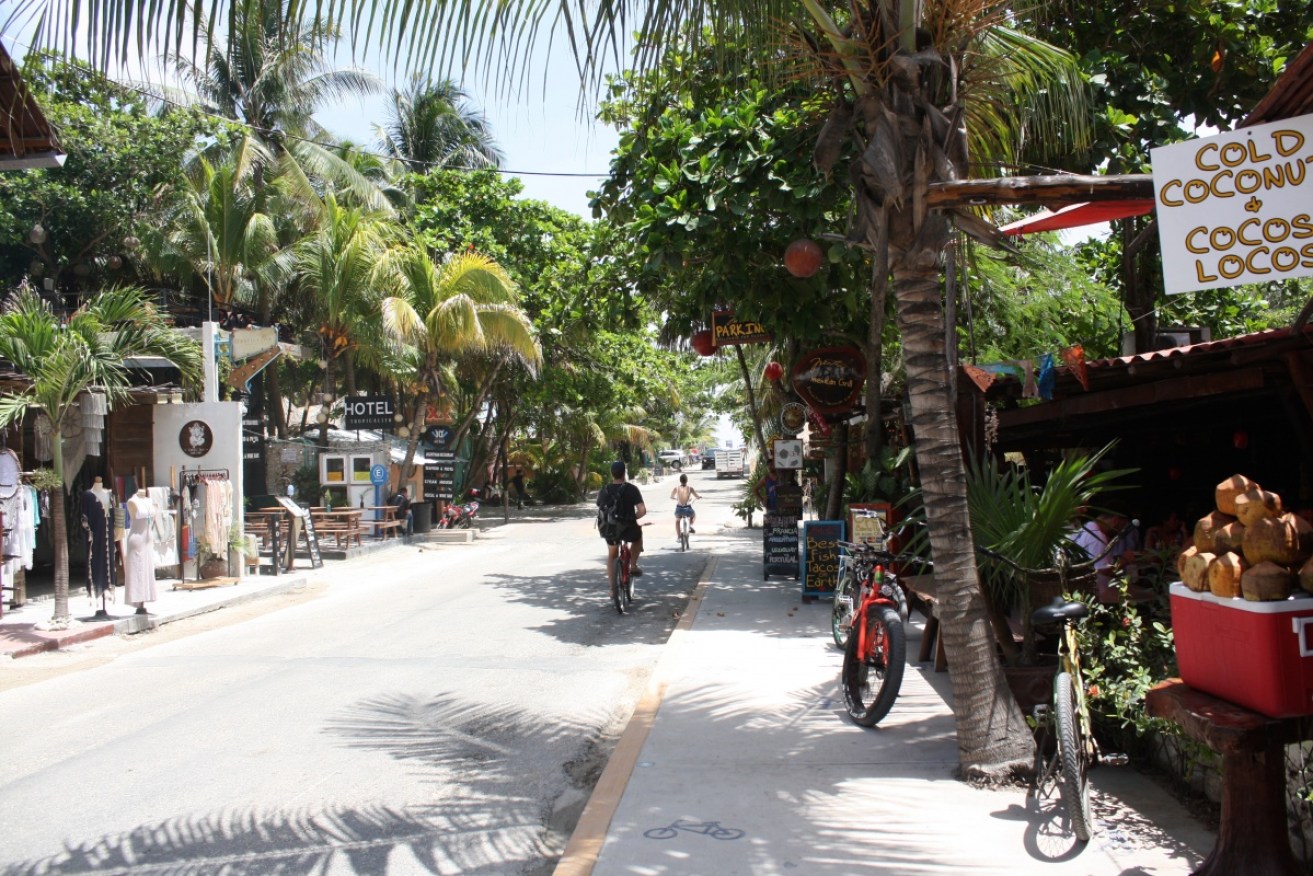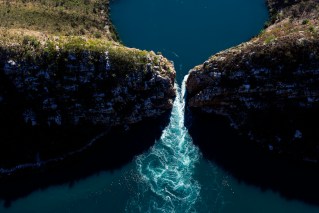The Instagram-ready resort that’s hotter than a jalapeno


Tulum's strip of bars and restaurants. Photo: Getty
“You’re sure I won’t feel the fall?” I ask, standing on a rocky edge looking hesitantly at blue-green water three metres below.
I am in Tulum, just 90 minutes south of Cancun on Mexico’s Yucatan Peninsula. The region has 4000 natural limestone sinkholes, known as cenotes. I am about to plunge into one.
Tulum. The name seemed to have been popping up everywhere. It was hashtagged beneath Instagram shots of treehouse hotels, next to videos of breathtaking cenotes and at the top of “best of” travel lists.
Still though, I’d wondered how similar it would be to Cancun – the Surfers Paradise of the Riviera Maya.
Growing up in the US, I’d been to Cancun countless times. My trips there were spent almost exclusively within all-inclusive resorts. Later, late nights at colossal nightclubs were added to the mix. That was just what most visitors did.

If diving into a cenote is not your thing, take a more leisurely approach. Photo: Getty
In all those years, Tulum never came up. But back then it wasn’t much more than a hippie village with seaside Mayan ruins. Left over from its days as a port city, they were its only claim to fame.
Today, while the ruins still draw daily hordes of tour groups spilling from buses, the surrounding area has grown at a mind-boggling rate. There is something to look at everywhere.
An art gallery made from wood and vines (IK Lab) here, a hotel in a house rumoured to have once belonged to infamous drug lord Pablo Escobar (Casa Malca) there.
Travellers have taken notice. In 2015, TripAdvisor reported a 74 per cent increase in tourism on the previous year. Last year, world-famous Copenhagen restaurant Noma chose Tulum as the spot to host its third pop-up, after relocating briefly to Sydney and Japan.
Tulum’s own dining scene is cult-worthy too, with dining at critically-acclaimed restaurant Hartwood requiring reservations a month in advance.
Foolishly, I showed up at 6pm one Friday hoping to secure one of its limited drop-in tables. I was told to come back the following week.
Nearby, restaurant and mezcal bar Gitano has been so successful, a second spot has opened in New York City.
Adding to its appeal is Tulum’s natural beauty: cenotes on every corner, a clear-to-cyan sea – though in some years, plagued by an influx of smelly seaweed from March to early July – and an untouched expanse of jungle.
A chunk of it, hugging the coastline, is where you’ll find Tulum’s hotel zone. It’s single snaking road is lined with restaurants and eco-resorts carved into greenery line. Dream catchers turn outside shopfronts. Palm fronds rustle in the ever-so-often very welcome breeze.
At night, it all gives way to high heels emerging from cabs, fairy lights twinkling in the trees and the woody smell of copal, a Mayan cleansing incense, wafting through restaurants.
Everyone somehow knows where to go when. It’s Gitano on Fridays, Papaya Playa Project on Saturdays. Mid-week, it’s mojito-specialising bar Batey in Tulum’s downtown pueblo.
Fifteen minutes from the hotel zone, downtown Tulum is a different scene entirely. Prices are more down-to-earth. There are hole-in-the-wall taquerias, heaps of hostels and laptop-friendly open-air cafes. Off the main drag, buried in the jungle, is Hotel Holistika, where I had probably the best yoga class of my life.
Downtown is also biking distance from many cenotes. The best-known among them is Gran Cenote, made up of several cenotes connected by timber boardwalks. Much lesser-known, but equally jaw-dropping is Cenote Calavera.
That’s where I was standing. My fingers pinched around my nose, I jumped. My stomach dropped as I felt suspended in the air. But before I could even form a thought, I was slicing into the cool turquoise water.
Coming up for air, surrounded by limestone cave walls, the sun warmed me instantly. I felt exhilarated. I wasn’t in Cancun anymore.
Getting there
Fly into Cancun, Mexico. From there, rent a car or take an ADO bus to Playa Del Carmen and then another to Tulum.
Where to stay
Hotel Holistika, near the downtown pueblo, offers private rooms from $200 a night or dorm beds from $60 a night.
Casa Malca, in the hotel zone, is part contemporary art gallery. It offers rooms starting from $545. Generally, room rates in the hotel zone vary greatly depending on the season.
Eco-resort Azulik, also in the hotel zone, offers timber villas starting at $545. Designed to allow guests to better connect with nature, these rooms have no Wi-Fi or electricity.
Don’t miss
Arrange a tour of IK Lab commercial art gallery ahead of time.
Visit Grand Cenote or Dos Ojos and be sure to rent snorkelling equipment.
If you’re there between June and September, book a once-in-a-lifetime swimming with whale sharks experience.








